Ditapis dengan
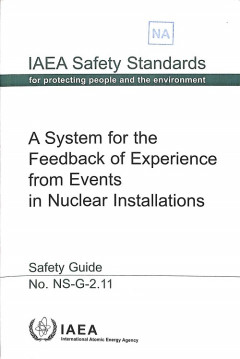
A System for the Feedback of Experience from Events in Nuclear Installations
This Safety Guide provides recommendations on all the main components of operating experience feedback systems, utilizing relevant information on events and abnormal conditions that have occurred at nuclear installations around the world. It focuses on the interaction between the different systems for using operating experience feedback and constitutes an update and an extension of Part I: A Na…
- Edisi
- -
- ISBN/ISSN
- 9201014066 / 1020525X
- Deskripsi Fisik
- 61 p. : Illus. ; 24 cm
- Judul Seri
- Safety Standards Series No. NS-G-2.11
- No. Panggil
- 621.483 IAE A
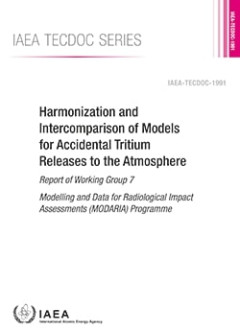
Harmonization and Intercomparison of Models for Accidental Tritium Releases t…
Models are essential tools in evaluating radiological impacts within the safety assessment process and regulatory control of facilities as well as of activities in planned exposure situations, existing exposure situations and emergency exposure situations. Modelling the transfer of radionuclides in the environment and assessing the resulting radiation exposure of people and the environment is n…
- Edisi
- -
- ISBN/ISSN
- 978-92-0-144221-5
- Deskripsi Fisik
- 148 p
- Judul Seri
- -
- No. Panggil
- 621.039.58 IAE h
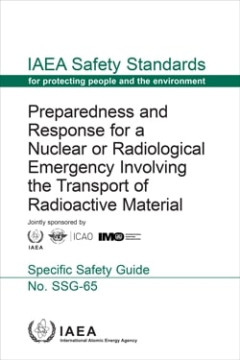
Preparedness and Response for a Nuclear or Radiological Emergency Involving t…
Radioactivity is a natural phenomenon and natural sources of radiation are features of the environment. Radiation and radioactive substances have many beneficial applications, ranging from power generation to uses in medicine, industry and agriculture. The radiation risks to workers and the public and to the environment that may arise from these applications have to be assessed and, if necessar…
- Edisi
- -
- ISBN/ISSN
- 978–92–0–127621–6
- Deskripsi Fisik
- 91 p
- Judul Seri
- IAEA safety standards series
- No. Panggil
- 614.876 IAE p
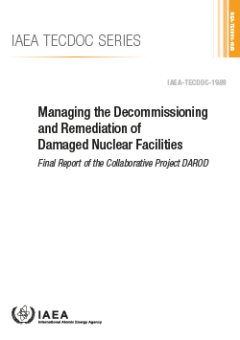
Managing the decommissioning and remediation of damaged nuclear facilities - …
In response to the accident at the Fukushima Daiichi nuclear power plant in March 2011, the IAEA developed the IAEA Action Plan on Nuclear Safety. One of the objectives of the plan was to ensure that, following a nuclear emergency, people and the environment are protected from ionizing radiation. One of the activities undertaken to address this objective was the International Project on Mana…
- Edisi
- 2021
- ISBN/ISSN
- 978-92-0-142521-8
- Deskripsi Fisik
- 136 p
- Judul Seri
- -
- No. Panggil
- 539.7 IAE m

Safety Reports Series No. 30: Accident Analysis for Nuclear Power Plants with…
The objective of this publication is to provide specific guidance for accident analysis for nuclear power plants with pressurized water reactors, taking into account the specific design features of these reactors. This guidance covers all steps required to perform such analyses, including selection of initiating events, acceptance criteria, computer codes, modelling assumptions, preparation of …
- Edisi
- -
- ISBN/ISSN
- 92-0-110603-3 / 1020-6450
- Deskripsi Fisik
- 65 p. : Illus. ; 24 cm
- Judul Seri
- Safety Reports Series
- No. Panggil
- -
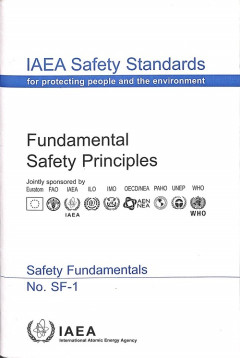
Fundamental Safety Principles, Safety Fundamentals
This publication states the fundamental safety objective and ten associated safety principles, and briefly describes their intent and purpose. The fundamental safety objective — to protect people and the environment from harmful effects of ionizing radiation — applies to all circumstances that give rise to radiation risks. The safety principles are applicable, as relevant, throughout the en…
- Edisi
- -
- ISBN/ISSN
- 9201107064 / 1020525X
- Deskripsi Fisik
- 21 p. : Illus. ; 24 cm
- Judul Seri
- Safety Standards Series No. SF-1
- No. Panggil
- -
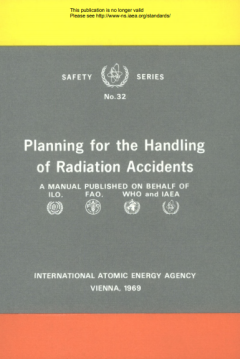
Safety Series No.32 Planning for the Hendling of Radiation Accidents
public authorities and others who are responsible for preparing emergency plans for the handling of radiation accidents with the aim of minimizing the resulting exposure of workers and of m embers of the public, and of reducing as far as , practicable any damage to property. This guidance m ust necessarily be of a general nature as it is not possible to predict with any precision the form which…
- Edisi
- -
- ISBN/ISSN
- -
- Deskripsi Fisik
- -
- Judul Seri
- -
- No. Panggil
- -
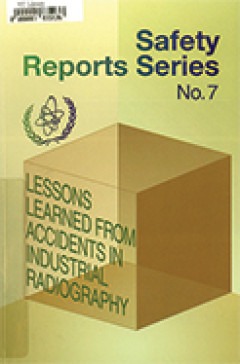
Lessons Learned from Accident in Industrial Radiography
This Safety Report contains the findings of extensive research in terms of the lessons that can be learned from accidents which have occurred in industrial radiography, both in developed and developing countries. The review was carried out by a team of regulatory authorities, manufacturers and safety advisers. The objectives were to draw lessons from the initiating events of the accidents, the …
- Edisi
- -
- ISBN/ISSN
- -
- Deskripsi Fisik
- -
- Judul Seri
- Safety Reports Series No. 7
- No. Panggil
- 620.915 IAE l
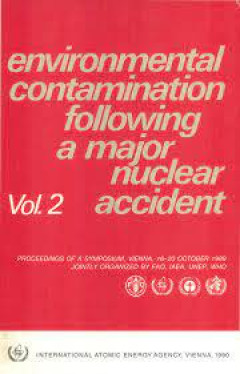
Environmental Contamination Following a Major Nuclear Accident, Vol. 1: Proce…
Proceedings of a symposium jointly organized with FAO, UNEP and WHO, Vienna, 16–20 October 1989. Scientific research on the after-effects of the Chernobyl accident on the environment and on human health has provided new data pertaining to large scale contamination. Papers at the symposium covered a wide range of subjects, including monitoring of radioactive contaminants in the environment, le…
- Edisi
- -
- ISBN/ISSN
- -
- Deskripsi Fisik
- -
- Judul Seri
- -
- No. Panggil
- -
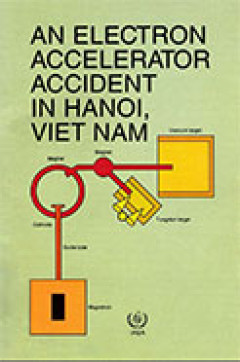
An Electron Accelerator Accident in Hanoi, Viet Nam
n 17 November 1992 a radiological accident occurred at an electron accelerator facility in Hanoi, Viet Nam. An individual entered the irradiation room without the operators' knowledge and unwittingly exposed his hands to the X ray beam. His hands were seriously injured and one hand had to be amputated. The report details the circumstances of the accident, its medical consequences and the govern…
- Edisi
- -
- ISBN/ISSN
- 9201004966
- Deskripsi Fisik
- 36 p. : Illus. ; 24 cm
- Judul Seri
- -
- No. Panggil
- 537.5 IAE a
 Karya Umum
Karya Umum  Filsafat
Filsafat  Agama
Agama  Ilmu-ilmu Sosial
Ilmu-ilmu Sosial  Bahasa
Bahasa  Ilmu-ilmu Murni
Ilmu-ilmu Murni  Ilmu-ilmu Terapan
Ilmu-ilmu Terapan  Kesenian, Hiburan, dan Olahraga
Kesenian, Hiburan, dan Olahraga  Kesusastraan
Kesusastraan  Geografi dan Sejarah
Geografi dan Sejarah